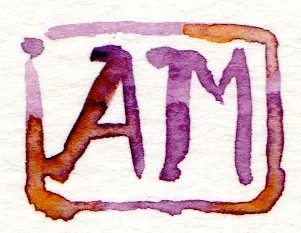A little history on Abstract Art
I am currently working on an entire body of artwork consisting mostly of abstract watercolor and abstract oil and cold wax paintings. I find myself so eager to get into the studio and work every week because creating these new works of art is so fascinating and rewarding. I thought you may enjoy a little history on the origins of abstract art and how it has developed over time. Enjoy!
Abstract art refers to a type of art that doesn't depict recognizable objects or subjects. It's an art form that emphasizes color, form, and texture, and often aims to evoke emotions and ideas in the viewer, rather than providing a clear, representational image. The history of abstract art can be traced back to the early 20th century, when artists began to experiment with new forms of expression.
In the 1910s and 1920s, artists in Europe and the United States started to reject the representational art of the past and began to explore new ways of creating art that was more expressive and abstract. The advent of modernism in art, and the influence of cubism and futurism, played a significant role in the development of abstract art.
One of the most significant artists of the early abstract art movement was Kazimir Malevich, a Russian painter and theoretician. He is best known for his 1915 painting "Black Square," which is widely considered to be one of the first truly abstract paintings. Malevich believed that art should break away from representing the physical world and instead represent pure emotion and spirituality.
Another important figure in the history of abstract art was Piet Mondrian, a Dutch painter who is best known for his geometric abstractions. He developed a style known as De Stijl, which emphasized the use of straight lines, right angles, and primary colors. This style was a major influence on the development of modernist art and design.
In the 1930s and 1940s, the American abstract expressionist movement emerged, and artists such as Jackson Pollock and Mark Rothko became well-known for their large, abstract paintings. Pollock's drip paintings, in particular, have become iconic of the abstract expressionist movement.
In the post-war years, abstract art continued to evolve and diversify. Minimalism, an art movement characterized by the use of simple geometric shapes and the emphasis on the materiality of the work, emerged in the 1960s. In the 1970s, artists such as Eva Hesse and Richard Serra began to create abstract art that was more experimental and conceptual in nature.
Today, abstract art continues to be a popular and influential form of expression, and its impact on the world of art can still be felt in contemporary art movements such as abstract expressionism, minimalism, and conceptual art. Whether it's the geometric shapes of Piet Mondrian or the chaotic drips of Jackson Pollock, abstract art has become an important part of art history and continues to inspire new generations of artists.
The history of abstract art is a rich and diverse one, marked by the experimentation and exploration of artists who sought to create new forms of expression. From the early 20th century to the present day, abstract art has played a vital role in the development of modern art, and continues to inspire and challenge artists and viewers alike.
My hope is that when viewers stand in front of one of my abstract paintings, they pause, and take a moment to really see and even feel what is going on in the artwork. It is not about an intellectual understanding, but experiencing a connection.

